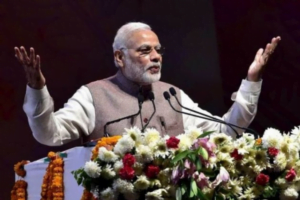India has a massive informal economy; hundreds of millions of people work in this sector, and since Prime Minister Modi took office in 2014, his government has been working to bring the masses into the formal economy.

Krishna Tripathi, age 37, came to Delhi from Gorakhpur, Uttar Pradesh, in 2007 and worked as a personal driver on a monthly salary without any health insurance or pension funds. In 2015, he changed jobs and started working for a small printing company, which again kept him on a fixed salary. After demonetization in 2016, his master formalised the company with a new GST number, and fortunately for Krishna, so did his job. Now he is covered under EPF and ESI. The data from various sources suggests that the number of employees enrolled in the national pension fund increased by 35% during the first half of India’s fiscal year, which ended in September. This increase is equivalent to 9 million additional people.
The GST, which was implemented in 2017, is a tax on value added throughout the supply of goods and services to the economy.
It has eliminated some indirect taxes, allowing for a streamlined indirect tax compliance process, and it has lessened the cascading of taxes. There has been an increase from 5 million to 14 million companies paying the goods-and-services tax, which is a sign that a legitimate business has been created. GST is a work in progress that is significantly better than previous systems, especially for MSMEs that want to formalise, expand, and get access to structured finance. Policy-wise, MSMEs have never had it so good.
According to Prof. Ashwani Mahajan of Delhi University, the transformation is significant, the swing is strong enough, and it is visible after looking at data from various sources. Of course, this is attributed to the Modi administration.
The National Pension System (NPS) enrolment for non-government subscribers was scheduled to treble from 9.7 lakh in March of this year to 20 lakh in March of 2023. There are increases for all age groups, but the largest increases are for those between the ages of 18 and 25, which suggests that new jobs may be responsible for the additions rather than the formalisation of existing ones.

It’s all because of India’s back office and technical services; IT coders and clerks account for 38% of the new hires, and secondly, all housekeeping jobs are going to registered contractors; earlier, these jobs were unregistered.
With the help of the production-linked incentive (PLI) programme of the government of India, iPhone manufacturer Apple Inc. created a plant through its three contract manufacturers, Foxconn, Wistron, and Pegatron. Foxconn, a Taiwanese electronics manufacturer, employed more than 60,000 workers and also made arrangements for their housing in Sriperumbudur, near Chennai. In the last five years, the workforce of Dixon Technologies, an Indian subcontractor with dozens of global clients and Foxconn-like operations, has increased from 1,500 to 20,000. All of this work is highly formal.
However, Professor Arun Kumar, a retired economics professor at JNU, disagrees. Inevitably, the data contains irregularities. Contract labour cannot be considered formal employment because the worker can be fired at any time.

Low-paying, labor-intensive occupations in the informal sector will be replaced by more lucrative ones in the formal sector as formalisation moves further.
There is still a long way to go for a huge country like India. The long-term benefits of formalisation outweigh any short-term disruptions that may result.





